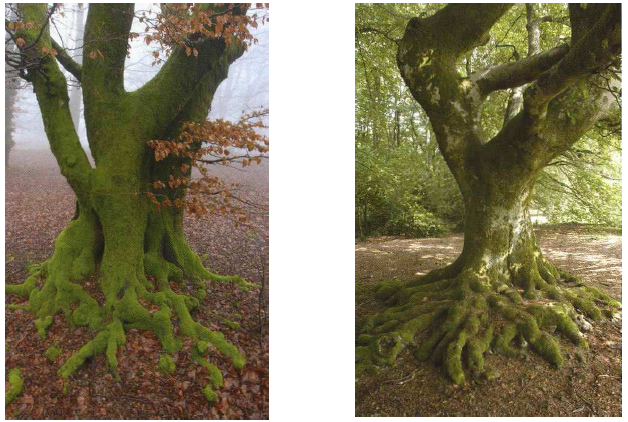4) Beech Goddesses?: the Baginatiae
Furthermore, ‘Beech Mother Goddesses’ might be worshipped in the south-east of Gaul (fig. 45). The Matres Baginatiae are known from four inscriptions found in Provencal Drôme, in Bellecombe: Baginatiabus [v]slm, ‘To the Baginatiae, [the dedicator] paid his vow willingly and deservedly’, and in Sainte-Jalle: Baginatiab(us) Primula Quinti f(ilia) vslm, ‘To the Baginatiae, Primula daughter of Quintus paid her vow willingly and deservedly’; Baginiatiabus C(aius) Girubius Cato vslm ‘To the Baginatiae, Caius Girubius Catus paid his vow willingly and deservedly’ and Baginatiabus Ioventius Lemisonis f(ilius) vslm, ‘To the Baginatiae, Ioventius son of Lemisonis paid his vow willingly and deservedly’.1069 The Baginatiae are etymologically related to gods, such as Baginatis (Jupiter), venerated in Morestal (Isère),1070 Baginus in Tarendol and Bellecombe (Drôme)1071 and less convincingly Baco – written with the letter c -, honoured in Chalon-sur-Saône (Saône-et-Loire).1072
The meaning of their epithet is still controversial. On the one hand, it might be derived from a Gaulish word *bagos designating ‘beech’.1073 On the other hand, it may come from a root bag- signifying ‘to fight’.1074 Lambert however explains that the ending of their name in –atis indicates a close and special relation to a place.1075 Like Mercure Dumiatis is ‘the inhabitant of Dumion (Puy-de-Dôme)’, the Baginatiae would be ‘the inhabitants of the bagino-’, that is of the wood of bago-’, or ‘the inhabitants of Mount Vanige’ (Drôme).1076 Their epithet is therefore to be understood as a topical adjective, rather than a name referring to the beech tree or to the notion of war.
